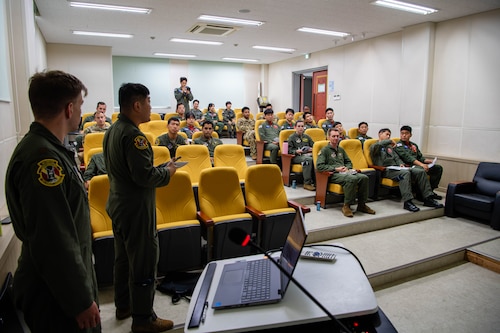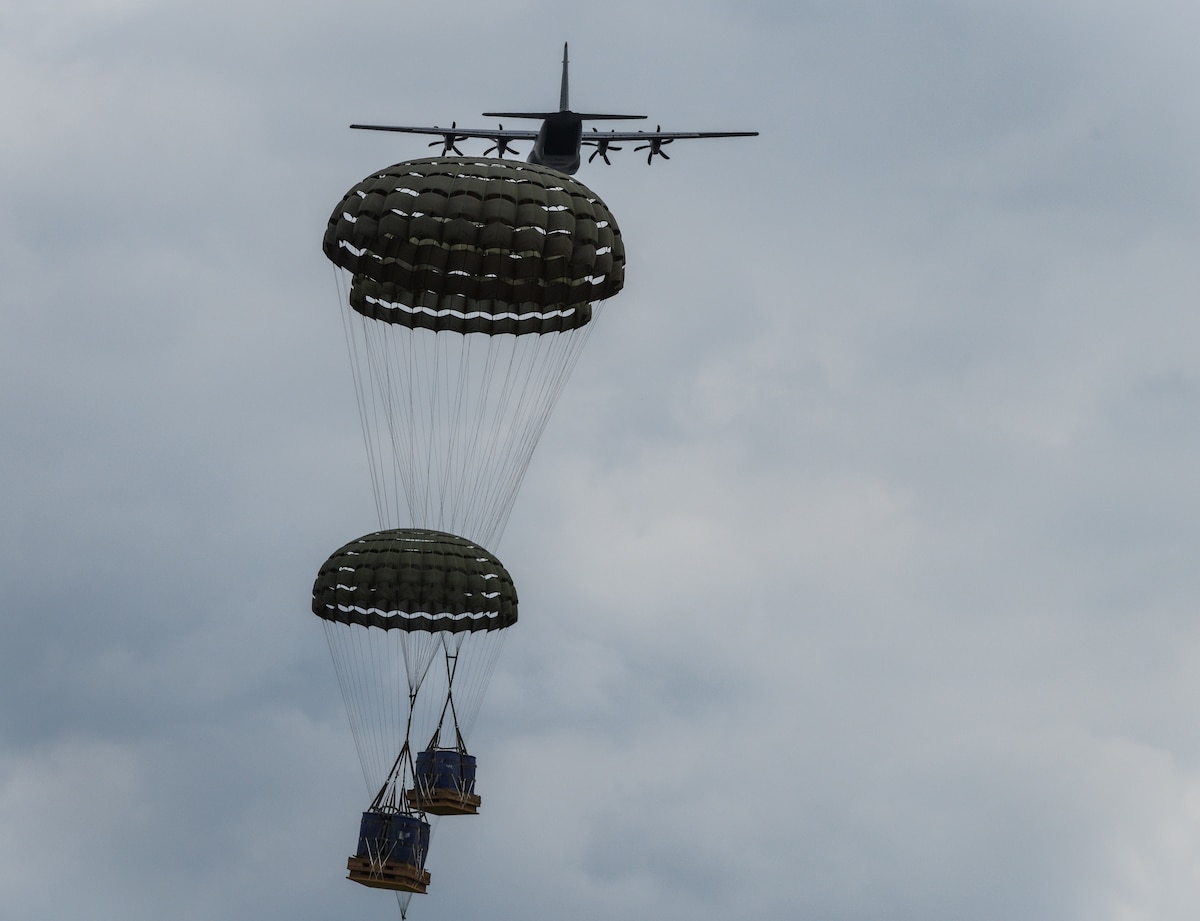A formation of five C-130J Super Hercules from the U.S. Air Force and Republic of Korea Air Force executed a mass airdrop resupply mission as part of a training to strengthen tactical airlift capabilities in the Korean Peninsula June 25.
The event marked the first time the U.S. Air Force and ROKAF conducted a combined five-ship formation on the peninsula, underscoring efforts by both the ROKAF, 7th Air Force and 374th Airlift Wing to further develop their relationship and enhance interoperability.
We are here to support an airdrop sortie for a C-130 out of Yokota [Air Base], as well as a ROKAF unit out of Gimhae to do an airdrop of container delivery system bundles," said Capt. George Foggin, 607th Air Support Operations Group air mobility liaison officer, whose unit provided the ground control and coordination for the designated drop zone.
Airmen assigned to the 36th Airlift Squadron flew four C-130Js from Yokota Air Base, Japan, to Gimhae Air Base, Republic of Korea, where container delivery system bundles were loaded onto each aircraft by Air Force and ROKAF personnel.
During this time, Air Force and ROKAF pilots also came together for a briefing to discuss the details of the mission.
"The 36th AS conducted this training to build interoperability with the Republic of Korea Air Force and facilitate tactical airdrop training," said Capt. Timothy Kim, 36th AS chief of theater engagement. "Practicing airdrops and tactical flying - especially in new airspaces and new drop zones - is always valuable training for the 36th AS. It was a great opportunity to interfly with our ROK allies."
The 36th AS and ROKAF last worked together during Operation Christmas Drop 2023 to deliver humanitarian assistance to 58 remote Micronesian islands. Prior to that, the two forces collaborated during Exercise Herk Guardians 23, where they conducted tactical formation training through low altitude flying and combined formation flights.
Capt. Heejoong Kim, 36th AS C-130J Super Hercules instructor pilot, served as the deputy mission commander for HG 23 and the mission commander for this most recent airdrop training. To him, the experience and relationships built during HG 23 paved the way for both forces to successfully coordinate mission plans in dispersed locations and execute a mass airdrop resupply.
"These trainings prove that we can work together and support each other in times of crisis," Heejong said. "The more we train together, the more comfortable we will be working together.
"There are challenges to overcome, from organizational culture to language barriers," he concluded. "These barriers can only be solved by working together and understanding each other better, enabling us to operate and execute missions effectively and efficiently as combined forces through partnership."











